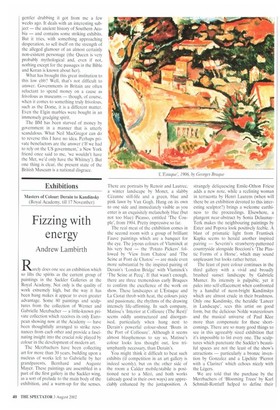Crisis in Bloomsbury
Martin Gayford believes that the present state of the British Museum is a national disgrace
Just under 250 years ago, in 1753, the British Museum was founded. In the words of its historian, J. Mordaunt Crook, it was 'the first museum in the world which was public, secular — and national'. There was opposition, as there always is in this country, to expenditure on cultural projects. George II, who like his father did not care much 'for boetry and banting', was indifferent or hostile. The prime minister tried to throw cold water. But the speaker, Arthur Onslow, managed to push it through.
To fund the necessary expenses, a lottery was established. Any person of respectable appearance — later amended to 'with clean shoes' — was allowed in, although it could take weeks to be issued with a ticket. Attempts to charge were fought off in the House of Commons. Altogether, it was a remarkable achievement of our Georgian forefathers.
A new director of proven brilliance, Neil MacGregor, has just taken over. What is he taking on? Enter through that austere portico in Bloomsbury these days, and you still don't have to pay. Nobody checks the state of your footwear or the respectability of your appearance (otherwise quite a few visitors would be barred). But inside you find yourself in an institution that is visibly in a state of crisis. Key galleries are closed except for a few hours in the late morning. In others — the one containing the Nereid Monument from Xanthos, for example — paint hangs off the walls as in an ancient station waiting-room.
Once the first among the great museums of the world, the BM now lags far behind its rivals and successors. The Met is a gleaming emporium of world art. The Louvre has undergone a complete revamp. There are several new and splendid galleries in Bloomsbury (devoted to Africa and China, for example). But I can think of
no comparable institution not even the Pergamon Museum in Berlin, recently emerged from decades of management by the East German government — that is as dingy as several prominent bits of the BM.
The greatest glory of the collection — many would say the most important works of art in Britain — are the Elgin (aka Parthenon) marbles. But these supreme sculptures are housed in a hideous and deadening space built in a sub-fascist neoclassical style in the 1930s at the behest of an art dealer of dubious reputation, Joseph Duveen, It is a space, as the late David Sylvester wrote, of a 'bullying pomposity' that seems to diminish any person or thing that enters it. This structure was helpfully demolished by the Luftwaffe (but perversely rebuilt by the trustees).
Part of the moral justification for keeping those and so many key items of other cultures — from Iraq, Nigeria, Egypt and Turkey — is that they are better cared for and more readily available to the public in London than they would be where they came from. That is no longer necessarily the case. The other sculptures from the Parthenon are better displayed in Athens than they are in London. Even access — not to the Elgin marbles, but to other almost equally important items such as the relics of the Mausoleum of Halicarnassus — is becoming restricted.
Meanwhile, in the sphere of exhibitions, these days — for good or ill — a key indicator of a museum's vitality, the BM is not doing so well. Despite the Great Court project, with its cafes and shops sheltering under a Norman Foster roof, the BM still lacks temporary exhibition galleries of sufficient size to take blockbuster shows.
Among the current exhibitions, one — From Bruegel to Rembrandt (until 22 September), an American collection of Dutch and Flemish drawings — is of a level of mediocrity that starts to sap the will to live. Or, at any rate, might permanently discourage the unwary from taking an interest in Old Master drawing. A few sheets, out of over 100, are beautiful and interesting, particularly the single Bruegel. But for the most part it thoroughly deserves the savage mauling it received from Brian Sewell in the Evening Standard last week. (To be fair, the exhibitions of the Prints and Drawings department are often admirable, though their galleries are dowdy in the extreme.) The most prominent current show, The Queen of Sheba, deserved the somewhat
gentler drubbing it got from me a few weeks ago. It deals with an interesting subject — the ancient history of Southern Arabia — and contains some striking exhibits. But it tries, with something approaching desperation, to sell itself on the strength of the alleged glamour of an almost certainly non-existent personage (the Queen is very probably mythological and, even if not, nothing except for the passages in the Bible and Koran is known about her).
What has brought this great institution to this low ebb? Well, that's not difficult to answer. Governments in Britain are often reluctant to spend money on a cause as frivolous as museums — though, of course, when it comes to something truly frivolous, such as the Dome, it is a different matter. Even the Elgin marbles were bought in an immensely grudging spirit.
The BM has been starved of money by government in a manner that is utterly scandalous. What Neil MacGregor can do to reverse this I have no idea. Perhaps private benefactors are the answer Of we had to rely on the US government,' a New York friend once said to me, 'we wouldn't have the Met, we'd only have the Whitney'). But one thing is clear, the present state of the British Museum is a national disgrace.



























































 Previous page
Previous page